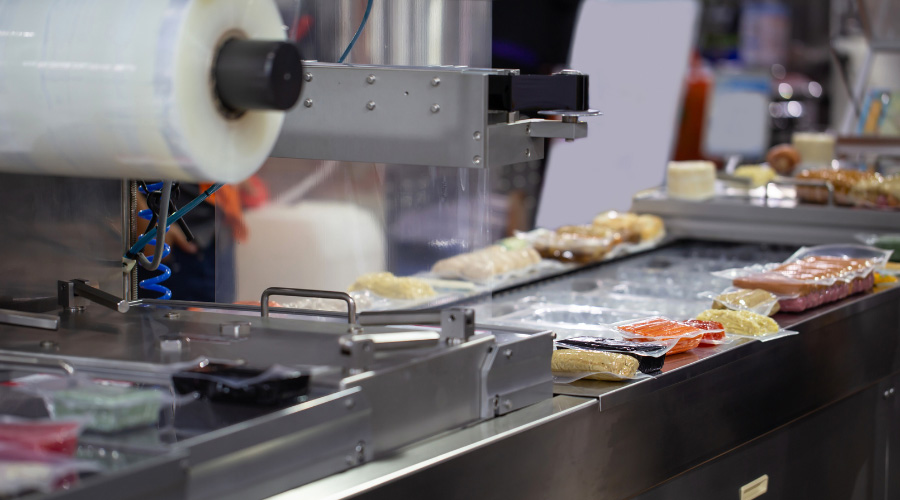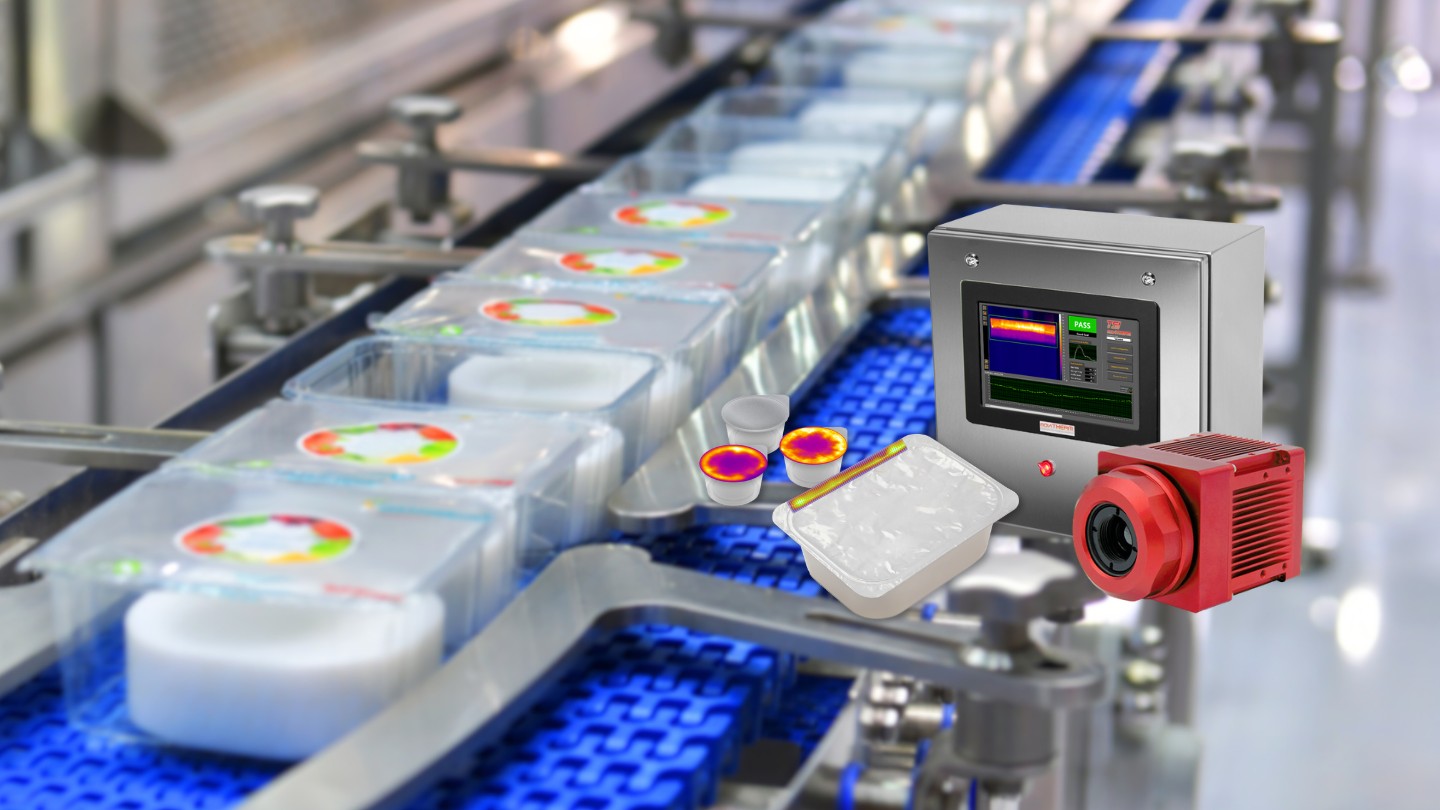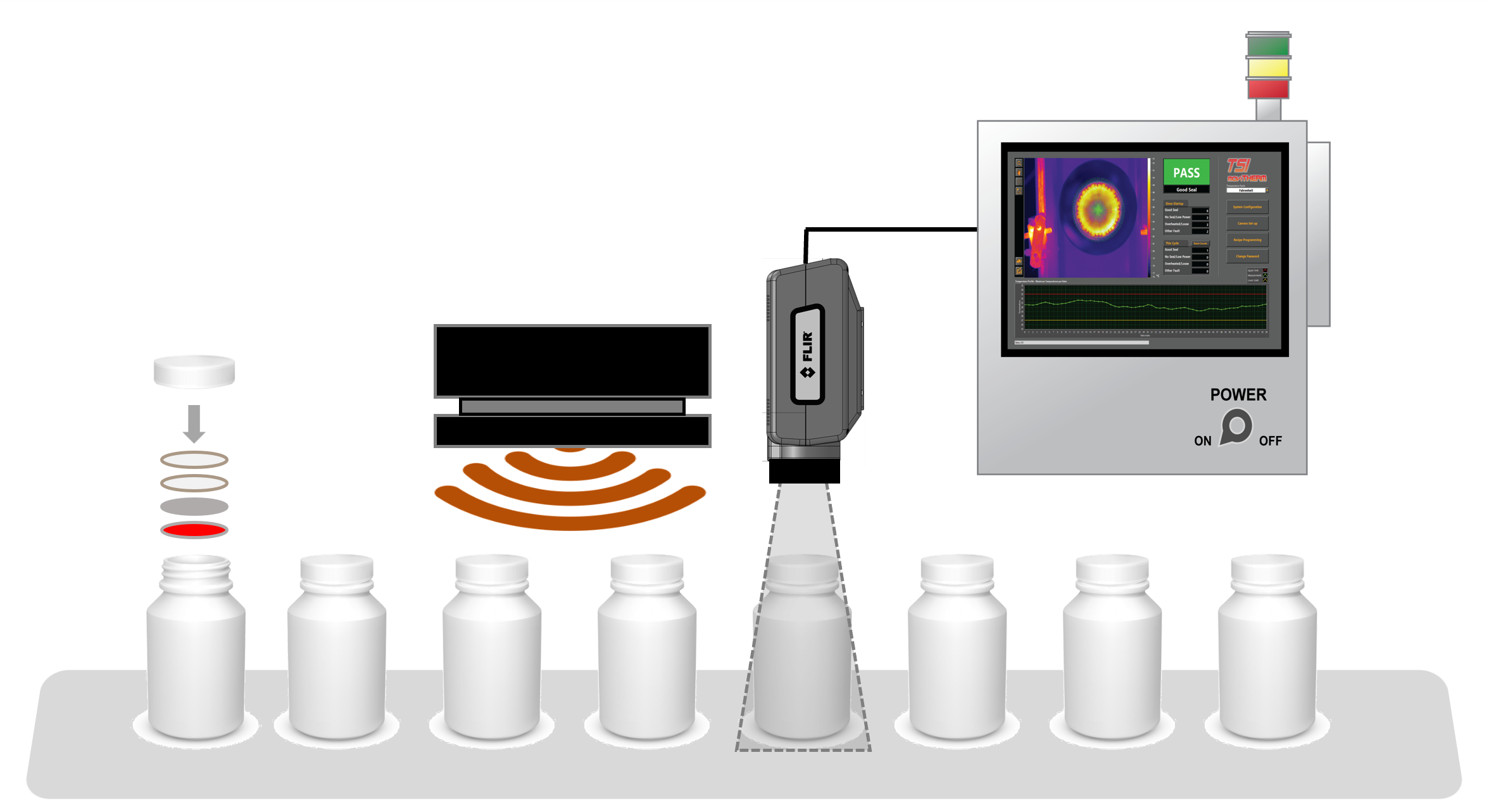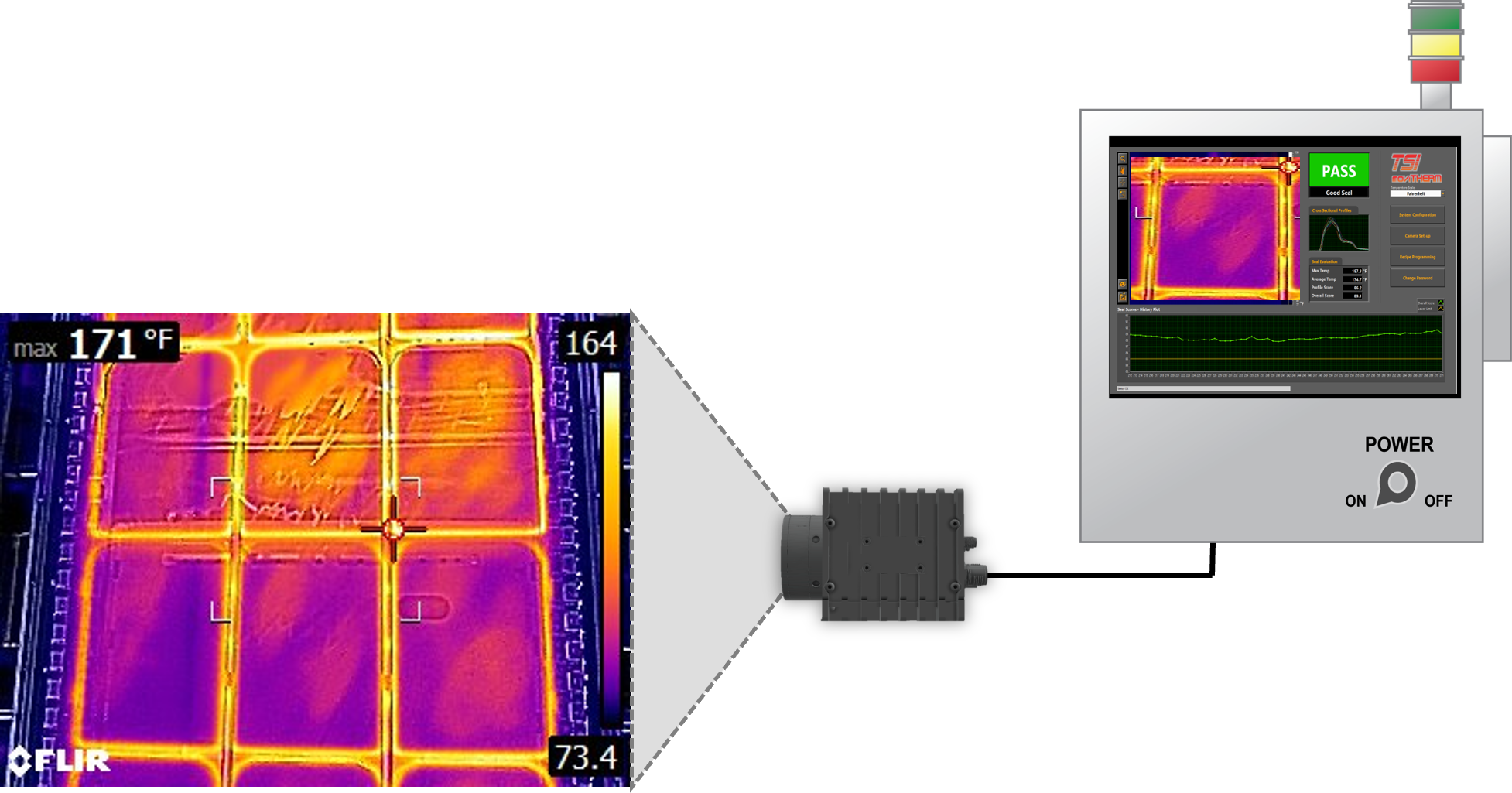Improve Packaging Line Efficiency Using Thermal Inspection
Using Thermal Imaging to Improve Packaging Line Efficiency
Improving packaging line efficiency is essential for businesses that want to stay competitive and profitable. A more efficient packaging line can lead to reduced costs, improved productivity, and increased customer satisfaction. Adding an inspection system to your line is recommended as it can reduce bad seals and increase overall efficiency.
Thermal seal inspection (TSI) is a fully automated system that uses thermal cameras to inspect the seals on packaging materials. This method detects temperature differences that can indicate faulty seals, such as gaps or areas of weak adhesion. With a thermal inspection system, you can quickly identify any defective packaging that may cause product damage, contamination, or shipping delays.
Here are some ways a thermal inspection system can improve the efficiency of your packaging line:
Reduce Downtime
A thermal seal inspection system can quickly detect defective packaging before it goes down the production line. This helps reduce the likelihood of downtime caused by packaging failure.
Reduce Film Waste
Thermal seal inspection helps to identify faulty seals early, which in turn reduces the need for rework. This results in a significant reduction in the amount of film wasted during the packaging process.
Improve Quality of Packages
Thermal imaging can detect temperature differences on the surface of packaging, allowing for the identification of even minor seal defects. This improves the overall quality of your packaging, reducing the risk of product recalls or customer complaints.
Increase Throughput
Automated inspections are faster than manual inspections, allowing for higher throughput in your packaging line.
Minimize Waste
By reducing the amount of faulty seals and rework needed, businesses can minimize waste and improve sustainability in their packaging operations.
Reduce the Chance of Missed Defects
Automated inspections offer the advantage of being consistent and impartial, which greatly reduces the potential for human error. This reduces the chance of missed defects that can lead to product recalls or customer complaints.
Easy to Integrate
Thermal cameras can be easily installed at various points along the line to ensure consistent inspection of packaging seals. The system requires very little hardware, making installation a very straightforward process.
Good Return on Investment
Businesses can recoup their investment in thermal seal inspection systems quickly by saving money on waste and rework costs.
Preventative Maintenance
Detecting faulty seals before they cause issues downstream can help to prevent costly breakdowns or maintenance issues with packaging equipment.
Enhance Customer Satisfaction
Enhanced package quality and reduced defect risk can result in greater customer satisfaction, ultimately boosting brand reputation and fostering customer loyalty.
How does thermal seal inspection work?
Thermal cameras can be used to inspect heat-sealed packaging by detecting temperature differences on the surface of the packaging. Heat-sealed packages are formed by applying heat to the packaging material, which melts and fuses to create a seal. Thermal seal inspection systems work by using infrared cameras to “see” the residual heat from thermal-based sealing processes. Identifying a good seal by the temperature profile allows TSI to reliably detect good and bad seals.
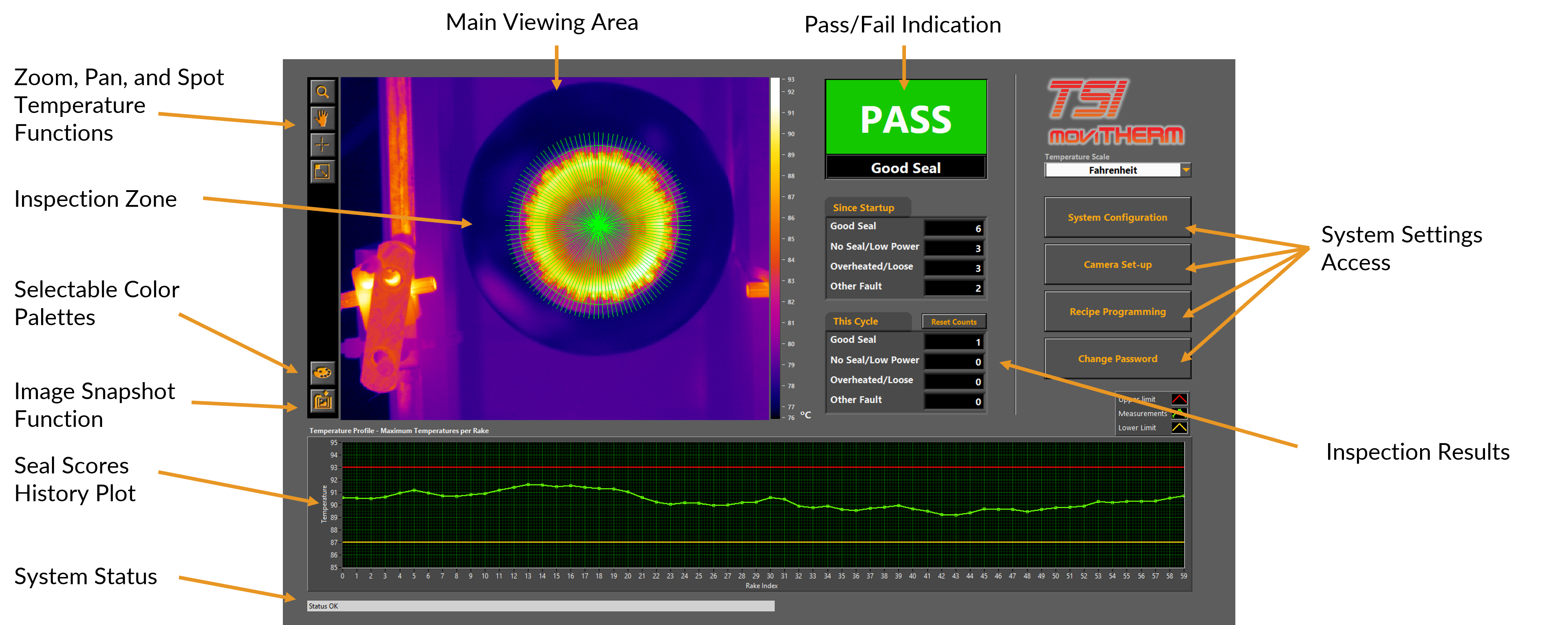
A properly formed seal should be uniform, without any gaps or defects. However, issues with the seal, such as incomplete sealing, contamination, or defects, can affect the temperature distribution on the package’s surface. The thermal camera can quickly and non destructively identify any defects or anomalies in the seal.
Packages Suitable for Thermal Inspection
Thermal seal inspection can work for different types of packaging, such as:
- Flexible Packaging – This includes pouches, bags, and sachets made from plastic films, aluminum foil, and paper.
- Rigid Packaging – This includes trays, clamshells, and blisters made from plastic, glass, and metal materials.
- Sealed Containers – This includes cans, jars, and bottles made from glass, plastic, and metal.
- Pharmaceutical Packaging – This includes blister packs, pouches, and bottles used for medication.
- Food Packaging – This includes trays, bags, and bottles used for food and beverage products.
Understanding the Impact of Packaging Materials on Thermal Imaging Inspection
To effectively use thermal imaging to inspect heat sealed packaging, it’s important to know how packaging materials look in infrared. The type of material used affects how well thermal imaging works for quality inspection.
Packaging materials have different emissivity levels that measure how well they emit thermal radiation. Materials with high emissivity are better at absorbing and emitting thermal radiation and are easier to detect using thermal imaging cameras. Materials with low emissivity, such as aluminum foil or metallicized films, can be challenging to inspect. This is because they reflect thermal radiation, making it difficult to obtain accurate temperature readings.

Visible and IR images of aluminum foil demonstrate how thermal reflections can interfere with temperature measurements. The IR image displays yellow and orange colors. These colors do not come from heat emitted by the foil. Instead, they are warm reflections from a hand placed over the foil.
Additionally, some packaging materials, such as plastics, can be thermally transparent in certain infrared wavebands. Plastic materials make it difficult to detect temperature variations on the material’s surface.
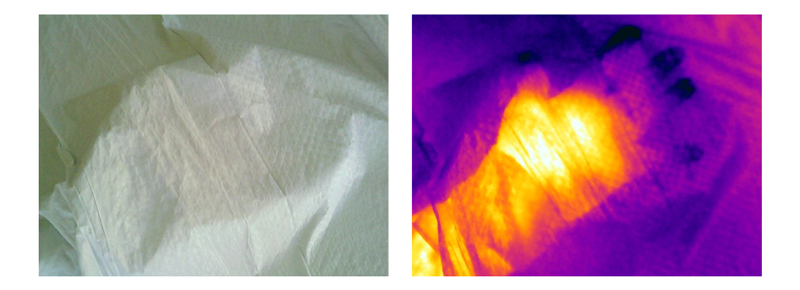
Visible and IR images of a plastic bag demonstrating opacity in the visible spectrum and transparency in the infrared wavebands.
To overcome these inspection challenges, infrared filters can be used to block out specific infrared wavelengths. Thermal camera wavebands can also be selected to improve the camera’s sensitivity to specific materials.
Conclusion
Thermal seal inspection can help businesses improve their packaging line by reducing downtime, waste, and missed defects. TSI systems can detect even minor seal defects, improving the quality of packaging and reducing the risk of product recalls. MoviTHERM’s thermal seal inspection is easy to integrate and offers a good return on investment. By detecting faulty seals early, businesses can avoid issues and enhance customer satisfaction.
About moviTHERM
moviTHERM – Advanced Thermography Solutions was founded in 1999. The company offers solutions for plastic welding, package sealing, and non-destructive testing. In addition, moviTHERM provides IoT Cloud monitoring solutions for thermal imaging applications for early fire detection, machine condition monitoring, and other applications. moviTHERM is a Teledyne Flir Premium Partner and master distributor for FLIR Thermal Cameras for automation and science applications.




